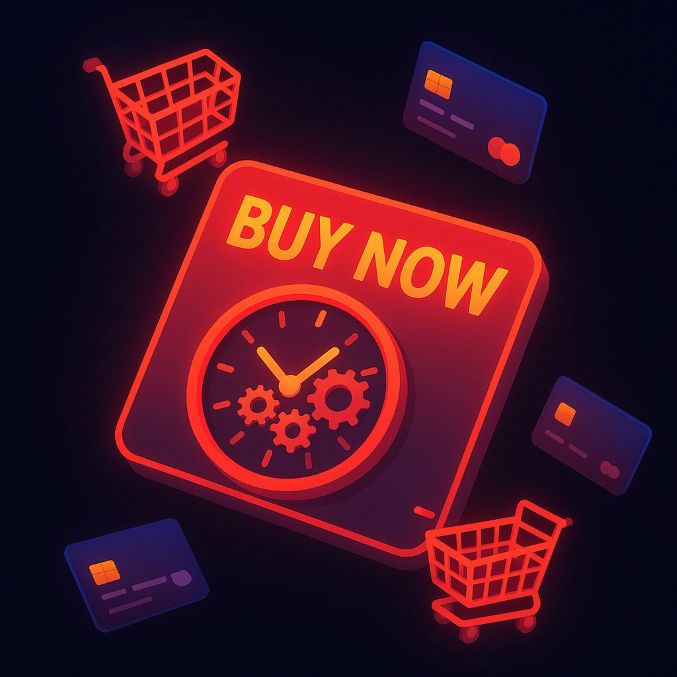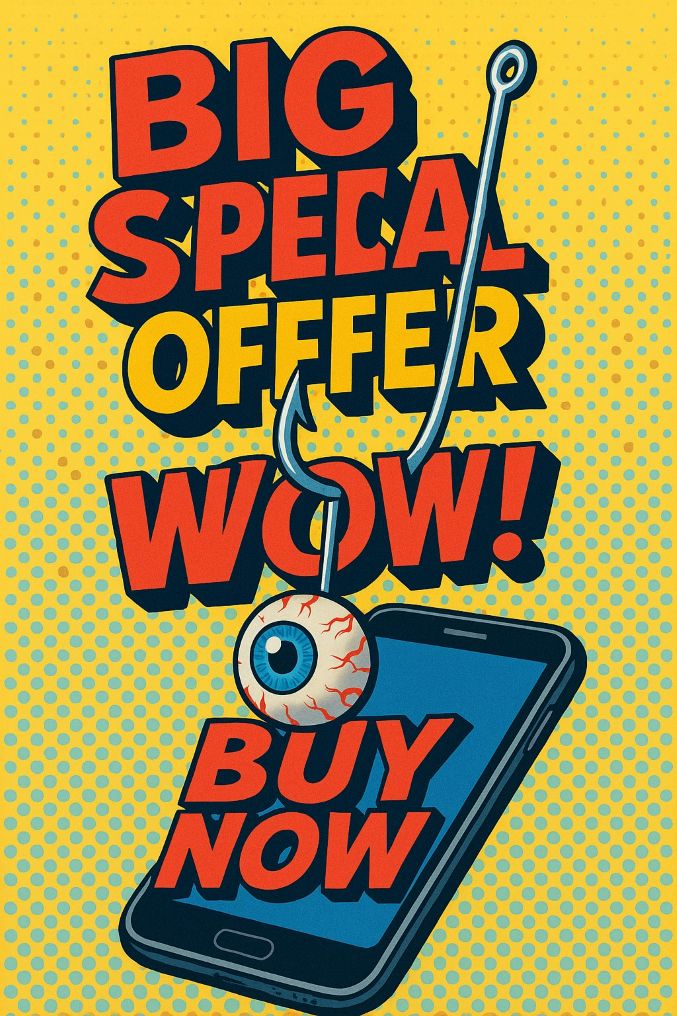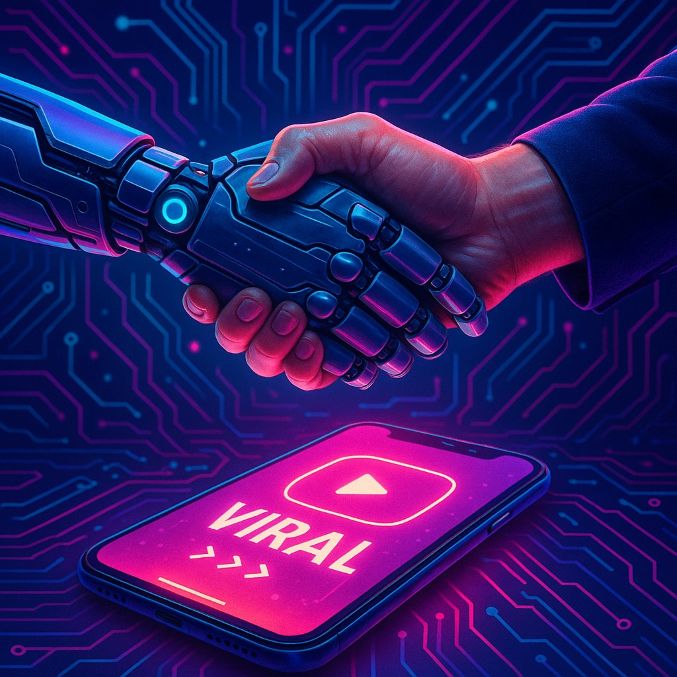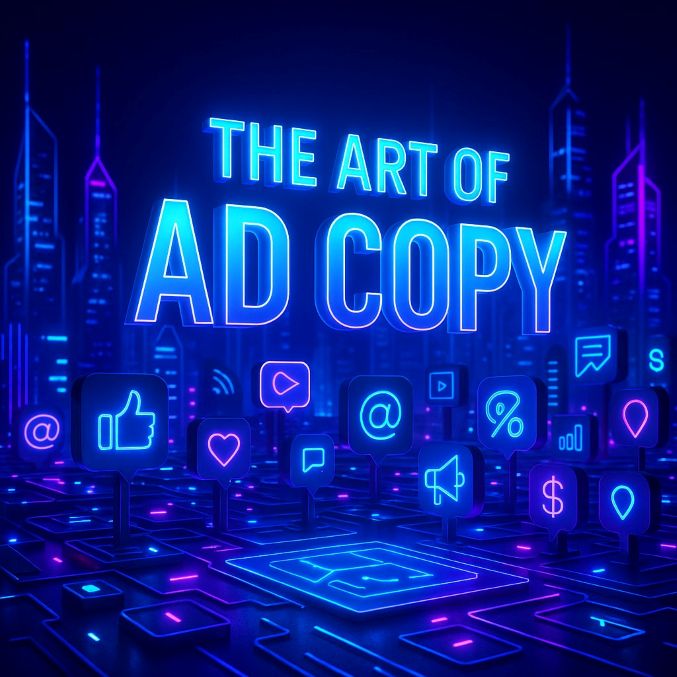The Art of Ad Copy: Headlines, Hooks & CTAs That Convert
In the hectic, fast-paced world of digital marketing today, the art of creating effective ad copy remains one of the most critical skills marketers own. As of 2025, even with AI-generated copy and automation ruling the roost, exceptional copywriting continues to make or break an ad's chances of converting or getting ignored.

Let's begin.
1. Why Great Copy Still Matters in 2025
Despite the progress made in AI and automation, human psychology has remained constant. Human nature still responds to feelings, curiosity, and great storytelling. That is why copy remains essential:
A. AI Can't Replace Human Emotion
AI technology can produce words but tends to miss the emotional depth and cultural breadth that resonates with humans. A compelling message is something that speaks to an individual level—something AI has yet to learn.
B. Attention Spans Are Getting Shorter
With short-form content (TikTok, Instagram Reels, YouTube Shorts) on the rise, brands only have seconds to capture attention. Brilliant copy quiets the noise and makes an instant impact.
C. Trust and Authenticity Matter Now More Than Ever
People are more cynical than ever about bland advertising. Pertinent, personalized copy gains trust and credibility, paving the way for more conversions.
D. SEO and AI are Dependent on Quality Copy
Search engines and AI systems reward high-quality, compelling content. Low-quality ads have decreased visibility, less ROI.
Key Takeaway: No matter how much AI comes into play, human-written copy that speaks to emotions, builds trust, and captures attention in an instant will outcompete boilerplate, robotic messaging each and every time.

2. The Psychology Behind Scroll-Stopping Headlines
Your headline is the first (and sometimes only) thing users will notice. A bad headline means lost engagement. Here's the psychology behind writing irresistible headlines:
A. The Curiosity Gap
People have a built-in desire to uncover answers. Headlines that tease information but don't give too much away (e.g., "The One Mistake 90% of Marketers Are Making") generate curiosity.
B. Fear of Missing Out (FOMO)
Scarcity and exclusivity create a sense of urgency. Headlines like "Spots Are Running Out Fast: Join 10,000+ Marketers Who've Already Joined" leverage FOMO very effectively.
C. Benefit-Driven Language
Users care about what's in it for them. Instead of "Learn About Our Software," write "Slash Your Workload by Half with This Easy Tool."
D. Power Words That Connect to Emotion
Some words trigger emotional responses:
· Urgency: Now, Today, Instant
· Exclusivity: Secret, Insider, Exclusive
· Trust: Proven, Guaranteed, Verified
Example Headlines That Get Results:
· "How This Startup Grew 500% in 6 Months (And How You Can Too)"
· "The Secret Technique for Doubling Your Click-Through Rate"
· "Only 3 Hours Left: Get the Discount Before It's Gone"
Key Takeaway: A great headline incorporates psychological triggers—curiosity, FOMO, benefits, and emotional power words—to stop the scroll and trigger clicks.

3. Hook Formulas That Work Everywhere
A hook is the initial line that captures attention in an instant. Various platforms require diverse hooks, but there are some formulas that work everywhere:
A. The Question Hook
Pose a problem that resonates:
· "Tired of Wasting Money on Ads That Don't Convert?"
· "What If You Could Get 2x More Leads in Half the Time?"
B. The Statistic Hook
Numbers lend credibility:
· "83% of Businesses Fail at This—Are You One of Them?"
· "How One Change Increased Our Sales by 200%"
C. The Story Hook
Stories create connection:
· "How a Single Mom Made $10,000 in 30 Days with This Strategy"
D. The Controversial Hook
Shake up assumptions:
· "Why 'Quality Content' Alone Won't Grow Your Business"
Platform-Specific Hooks:
· Facebook/Instagram: Short, visual, and benefit-driven.
· LinkedIn: Professional, data-driven, or thought-leading.
· Google Ads: Direct, solution-oriented, and keyword-heavy.
Key Takeaway: A solid hook is platform- and audience-appropriate and employs tried formulas (questions, statistics, stories, controversy).
4. CTAs That Drive Urgency Without Being Aggressive
Weakened conversions are terminated by a weak CTA. The perfect CTA is a balance between driving urgency and being authentic:
A. Time-Sensitive CTAs
· "Offer Ends Tonight—Claim Your Spot Now!"
· "Only 5 Seats Left at This Price"
B. Benefit-Focused CTAs
Rather than "Sign Up Now," use:
· "Start Your Free Trial & Save 50% Today"
C. Low-Commitment CTAs
Reduce friction:
· "Get Instant Access—No Credit Card Needed"
D. Action-Oriented Verbs
Strong verbs drive action:
· "Download Your Free Guide"
· "Book Your Spot Before It's Gone"
Key Takeaway: A spectacular CTA creates urgency with deadlines, highlights benefits, uses strong verbs, and reduces friction.
5. Split-Testing Copy: What Metrics to Track
Even great copy needs to be tested. Here's how to measure effectiveness:
A. Key Metrics to Monitor
· Click-Through Rate (CTR): Effectiveness of headline/hook.
· Conversion Rate: CTR that converts to action.
· Bounce Rate: Tells whether copy matches user intention.
· Engagement Rate (Social Media): Likes, shares, comments.
B. A/B Testing Best Practices
· Test only one thing at a time (headline, CTA, image).
· Test for at least 7 days to gather enough data.
· Use tools like Google Optimize, Unbounce, or Facebook Split Testing.
Key Takeaway: Continuous testing and tweaking from actual data keep your copy high-converting.
6. Real Examples: Successful Ads and Why They Succeed
Learning ad copywriting is best achieved by learning from successful campaigns. Below are three actual examples and why they succeeded so well:
A. Dollar Shave Club – "Our Blades Are F*ing Great"
Why It Succeeded:
· Humor & Relatability: The light, irreverent tone pierced through in a stuffy industry.
· Clear Value Prop: "Shave time. Shave money." conveyed benefits instantly.
· Strong CTA: "Try it for $1 today" made it easy to act.
B. Airbnb – "Live There"
Why It Worked:
· Emotional Appeal: Placed experience ahead of rentals.
· Inclusivity: "Belong anywhere" resonated with travelers.
· Visual + Copy Synergy: Stunning visuals paired with simple, effective copy.
C. Slack – "Where Work Happens"
Why It Worked:
· Problem-Solution Approach: Pinpointed pain points of email overload.
· Social Proof: "Used by millions" created credibility.
· Clean, Direct Messaging: No fluff, just clear benefits.
Key Takeaway: The most effective ads have strong hooks, emotional triggers, clear benefits, and frictionless CTAs. Look to top-performing ads in your space to tweak your strategy.
7. Leveraging AI Tools for Better Copywriting
AI is revolutionizing copywriting—not replacing copywriters, but augmenting them. Here's how to leverage AI tools:
A. Best AI Copywriting Tools in 2025
· ChatGPT (Advanced Prompting): Create headlines, hooks, and entire ad scripts.
· Jasper.ai: Marketing copy with the option to tailor brand voice.
· Copy.ai: Social media ads and email marketing copy.
· SurferSEO: AI content optimization for SEO-friendly copy.
B. How to Use AI Without Losing the Human Touch
· Use AI for Ideation, Not Final Edits: Create several drafts, then hand-edit.
· Add Brand Personality: AI copy can be bland—add slang, humor, or brand-specific dialogue.
· Test AI-Generated vs. Human-Created Copy: Human subtlety may win out sometimes.
C. AI for Hyper-Targeted Ads
AI can look through customer information to suggest tailored messaging, such as:
· Dynamic Ad Insertions: Dynamic CTAs in reaction to user behavior.
· Sentiment Analysis: Tone adjustment based on audience sentiment.
Key Takeaway: AI speeds up ideation and optimization, but human creativity and empathy cannot be substituted.

8. Personalization Strategies for Higher Engagement
Generic ads are ignored. Personalization boosts engagement by 42% (Statista, 2024). This is how to personalize ad copy effectively:
A. Dynamic Keyword Insertion (DKI)
Example:
Ad: "Looking for {Keyword}? Get 50% Off Today!"
User searches "running shoes" → "Looking for running shoes? Get 50% Off Today!"
B. Behavioral Triggers
Retargeting Ads:
"You left something in your cart—complete your purchase now!"
"Based on your browsing history, you might love this."
C. Location & Demographic Personalization
Localized CTAs: "New Yorkers—Exclusive Deal Just for You!"
Age/Gender Adjustments: Gen Z vs. Boomers messaging variations.
D. AI-Powered Personalization
Platforms like Optimizely and Dynamic Yield automatically optimize copy based on:
· Historical purchases
· Browsing history
· Time
Key Takeaway: The more personalized the ad, the higher the conversion. Use data-driven personalization to make the user feel heard.
9. Storytelling in Ad Copy: Building Trust and Connection
Humans remember stories, not pitches. Here's how to add storytelling to ads:
A. The Hero's Journey Framework
1. Problem (Struggle): "I spent hours on spreadsheets…"
2. Solution (Guide): "Then I discovered [Product]."
3. Success (Transformation): "Now I save 10 hours/week."
B. Customer-Centric Stories
· Testimonials: "How Sarah 3X'd Her Revenue in 30 Days"
· Case Studies: "Before & After" comparisons with real data.
C. Emotional Story Arcs
· Nostalgia: "Remember when…?"
· Aspiration: "Imagine if…"
· Fear of Loss: "Don't miss out on…"
Example:
"Five years ago, I was a struggling freelancer. Then I discovered [Tool]. Today, I have a 6-figure agency. Want to know how?"
Key Takeaway: Stories humanize brands, build trust, and make messages memorable.
10. Copy Adaptation to New Platforms and New Formats
New formats (TikTok, Threads, VR ads) need new copy strategies:
A. Short-Form Video (TikTok, Reels, YouTube Shorts)
· Hook in 0-3 Seconds: "Stop wasting money on ads!"
· Text With Overlays: Visual reinforcement of key points.
· Interactive CTAs: "Comment 'YES' if you agree!"
B. Voice Search & Audio Ads (Podcasts, Alexa)
· Conversational Tone: "Hey, want to save on your next purchase?"
· Clear, Simple Language: No technical language.
C. Augmented Reality (AR) & Virtual Reality (VR) Ads
· Immersive CTAs: "Tap to try it in your space!"
· Sensory Language: "Feel the difference."
D. Chatbot & Conversational Ads
· Two-Way Interaction:
Bot: "Need help finding the right product?"
User: "Yes" → Bot: "Great! What's your biggest challenge?"
Key Takeaway: Each new platform calls for a different copy approach—remain flexible and test early.
Final Thoughts
Good ad copy in 2025 is a marriage of data, psychology, storytelling, and flexibility. By learning from successful ads, applying AI judiciously, tailoring messages, leveraging storytelling, and being one step ahead of platform trends, you can create ads that don't just get attention but deliver real, measurable results.
Which of these will you test first? Comment below!


Comments
No Comments To Display